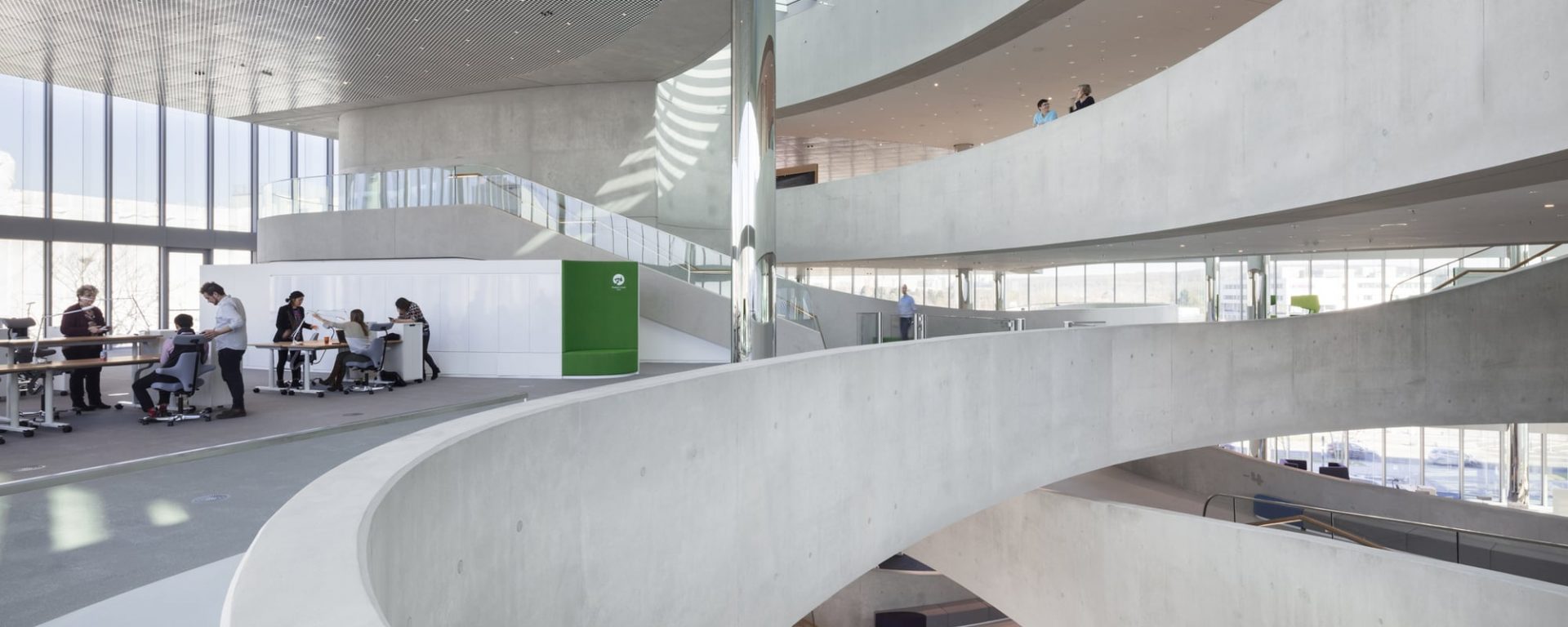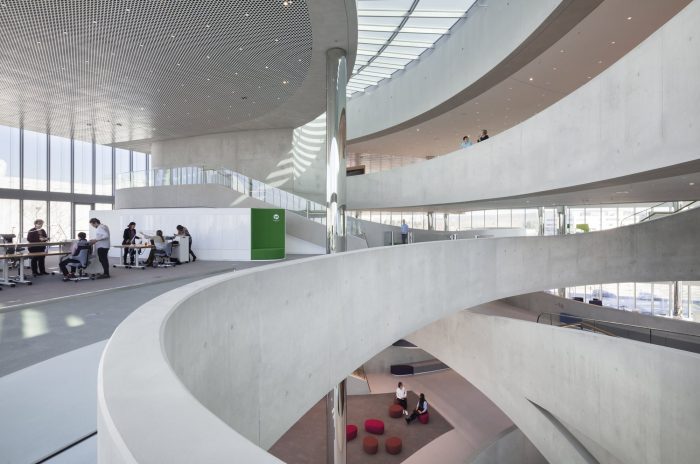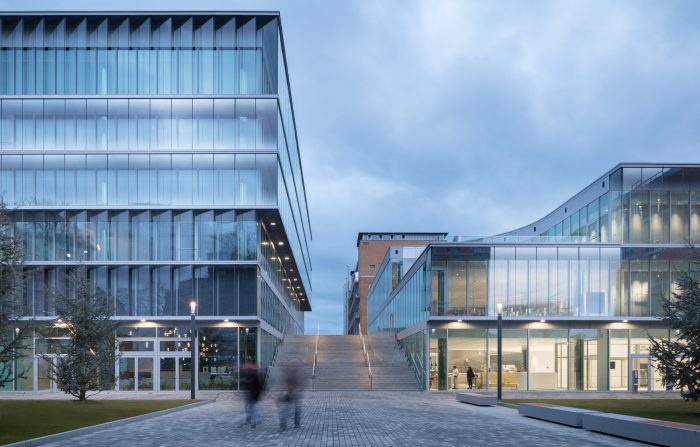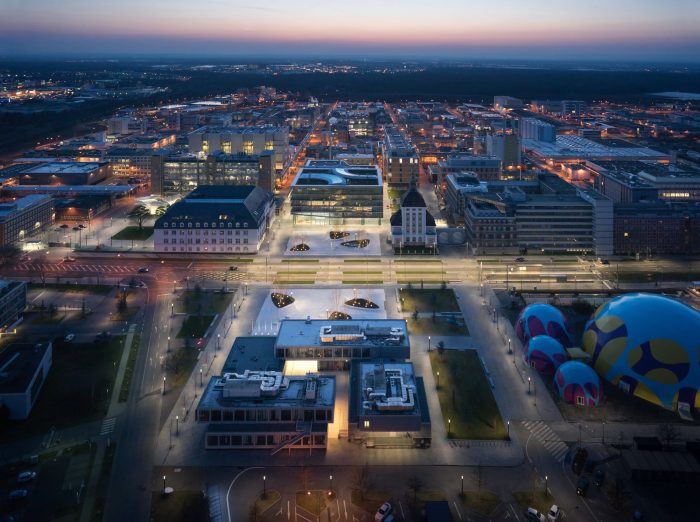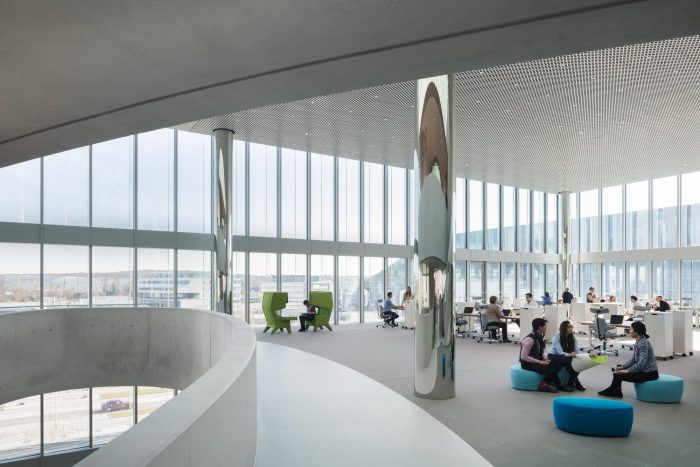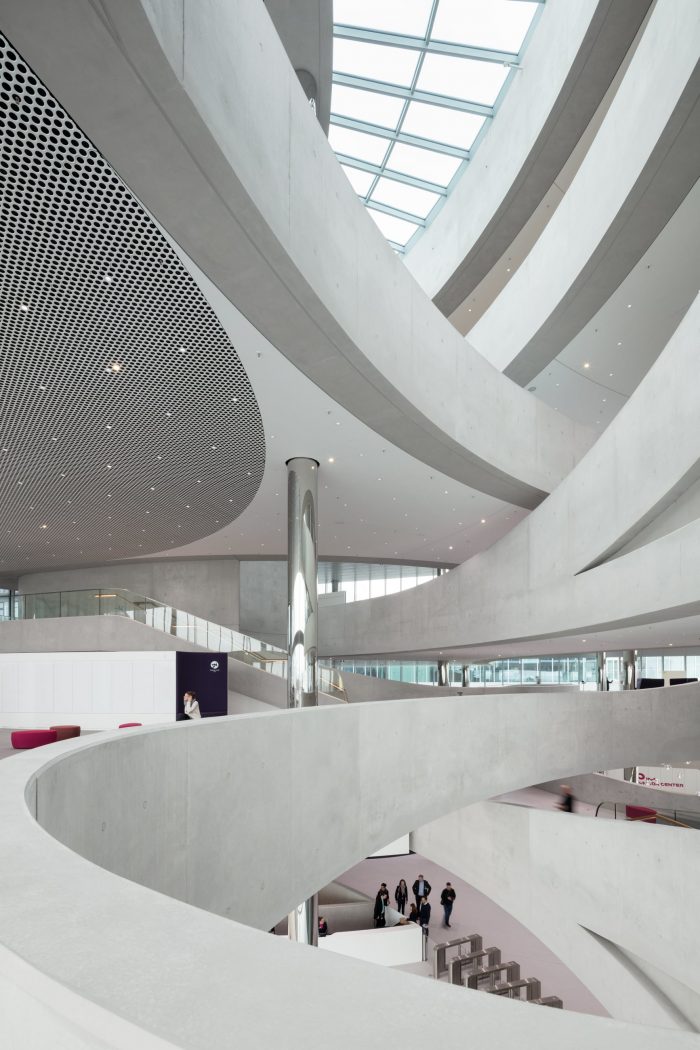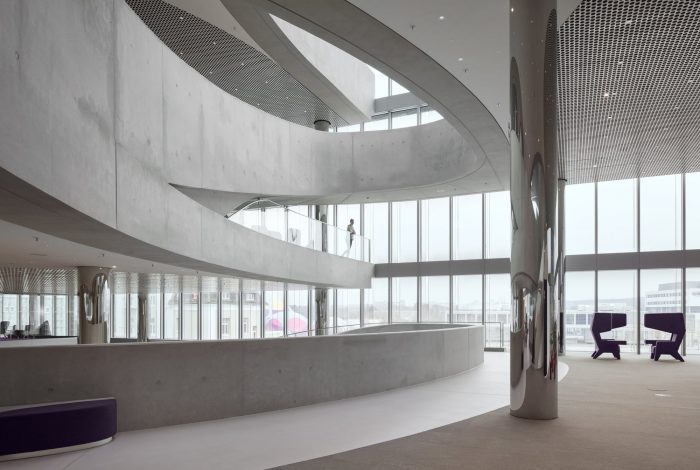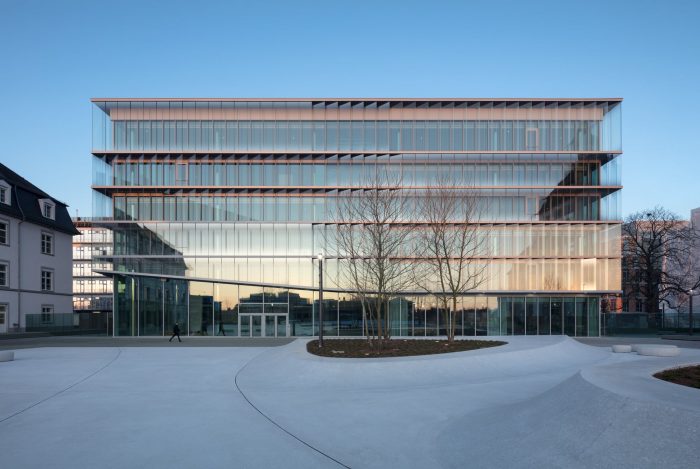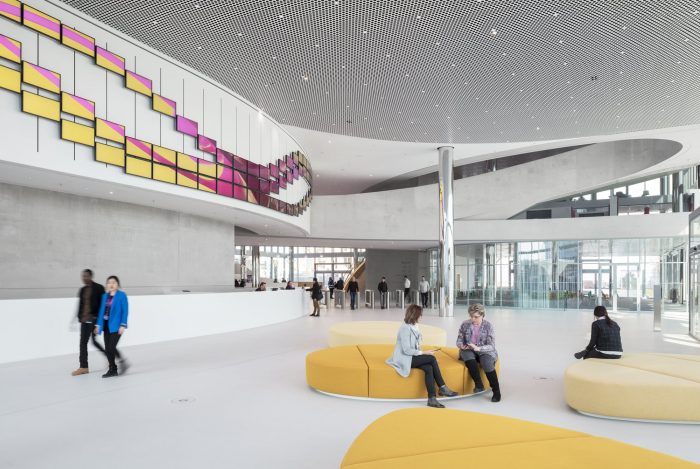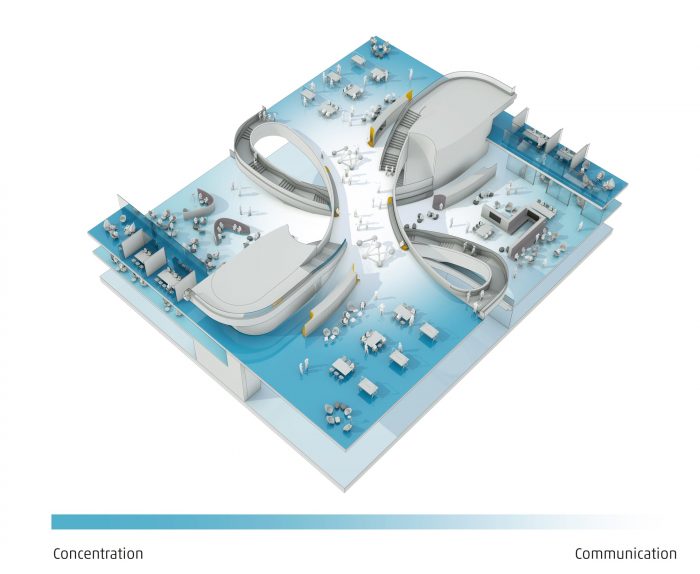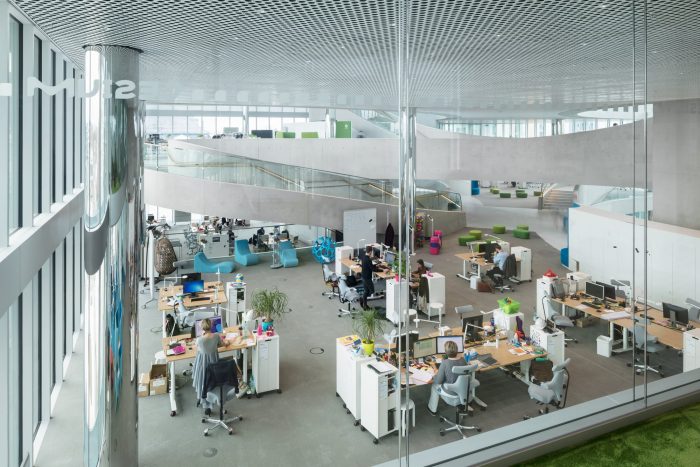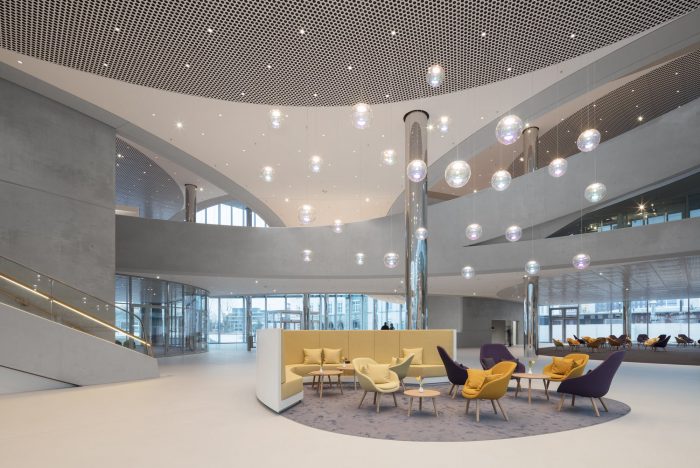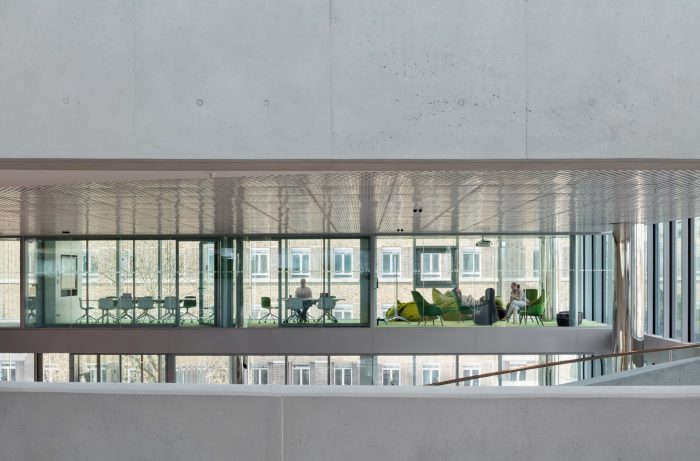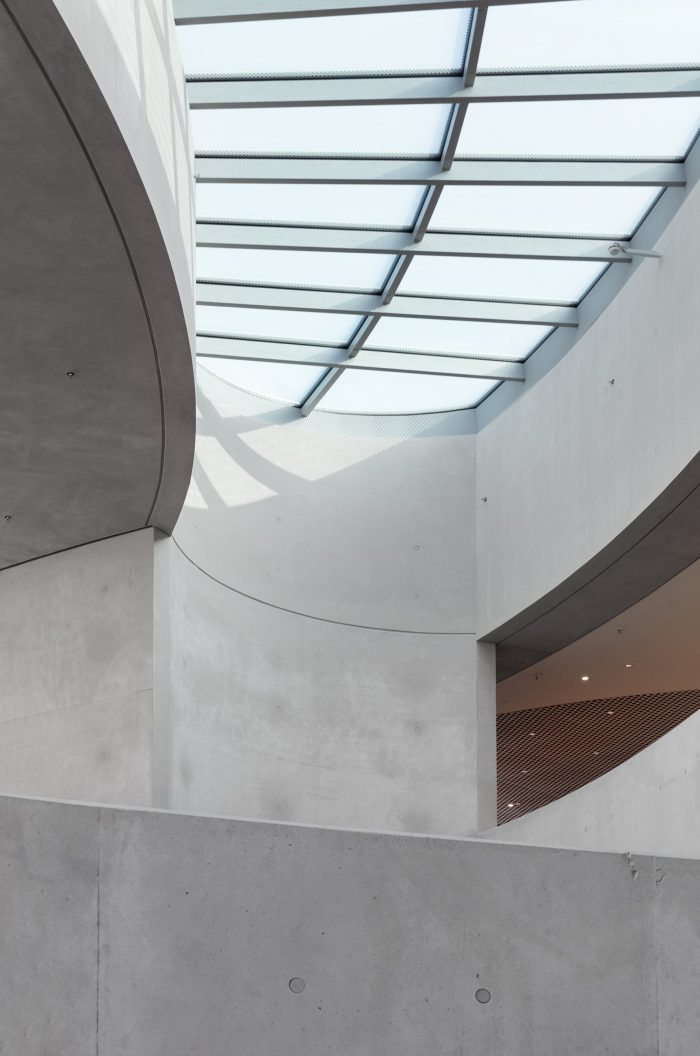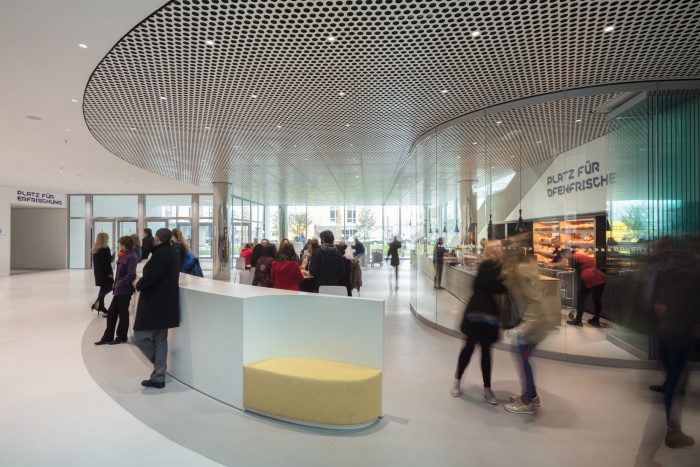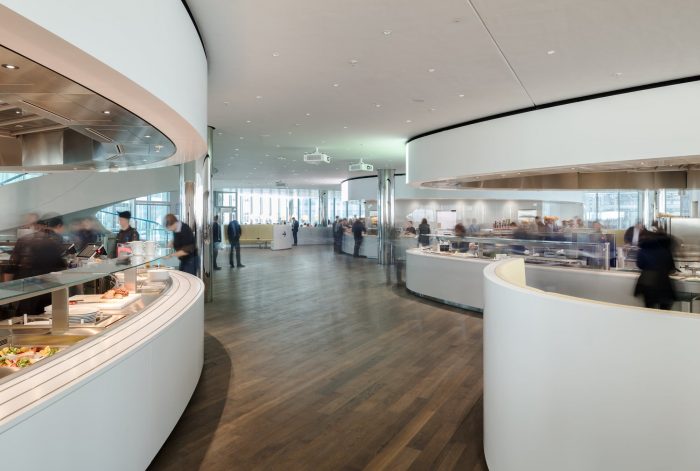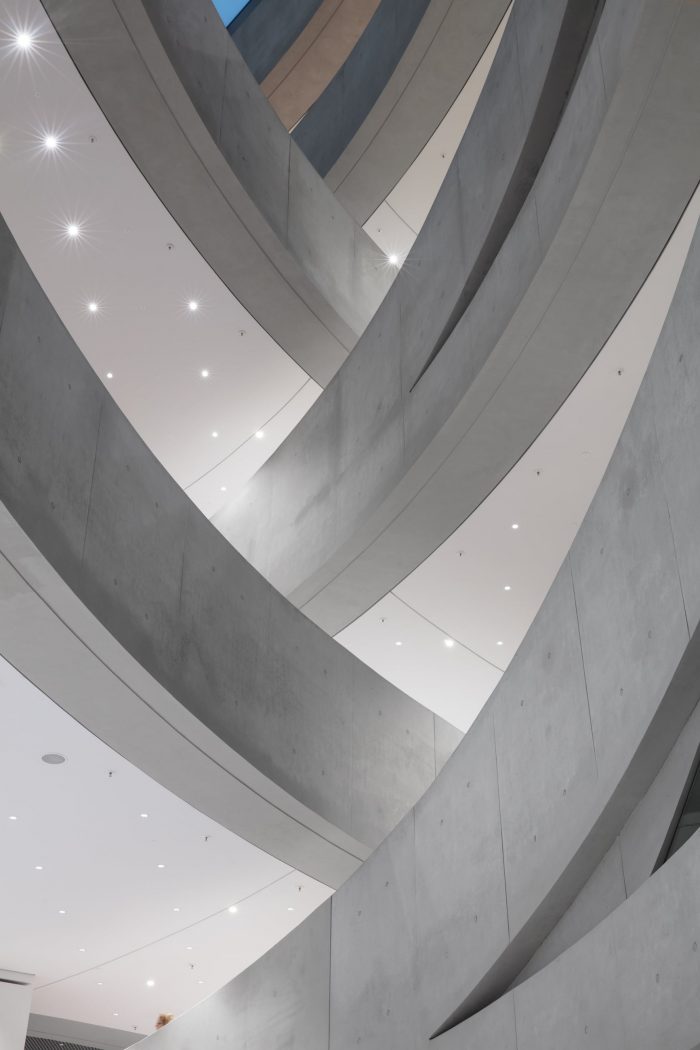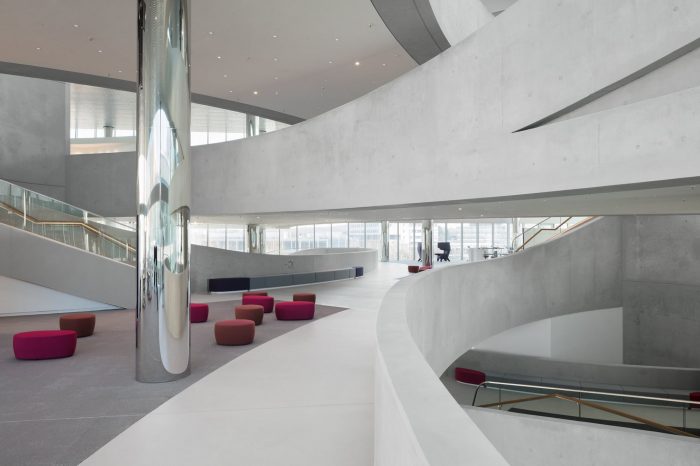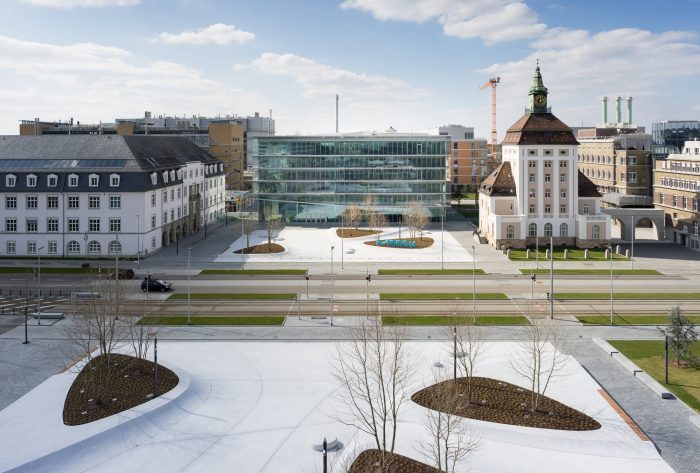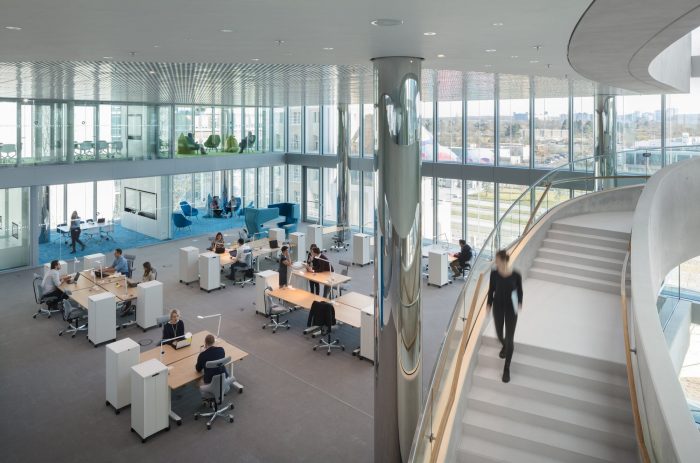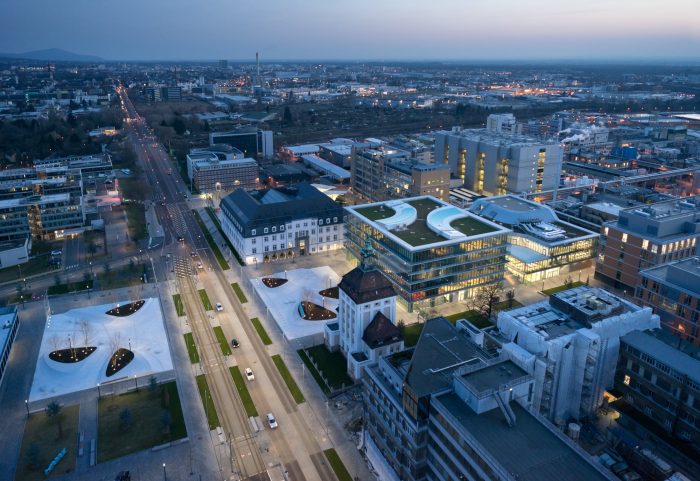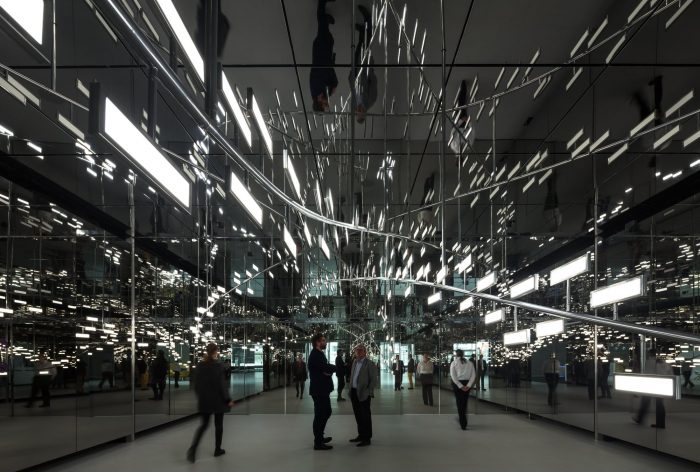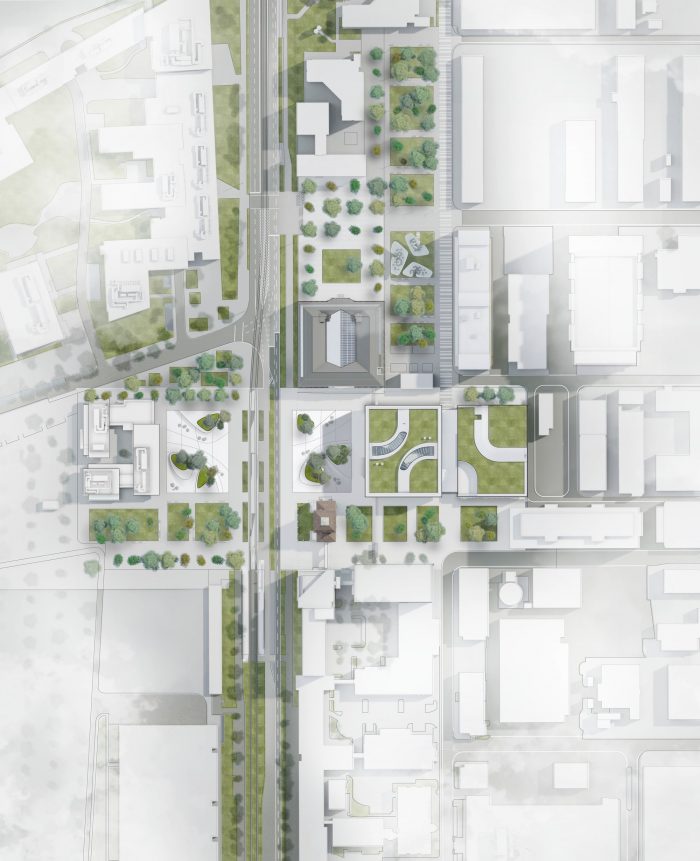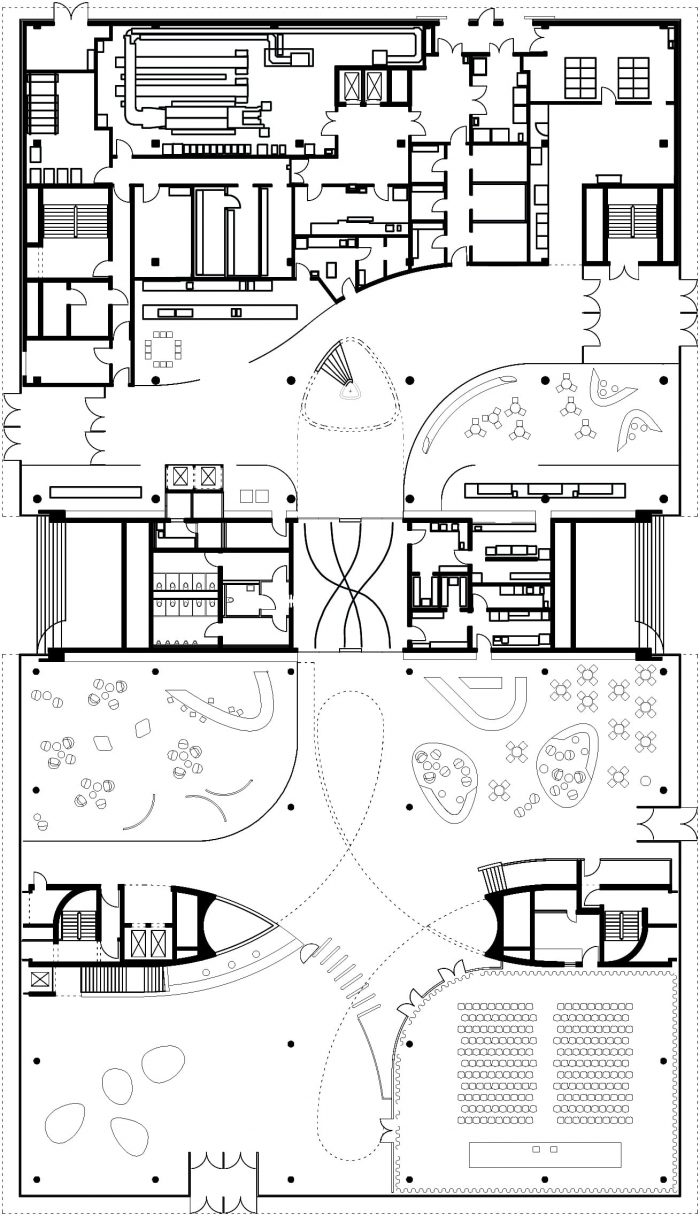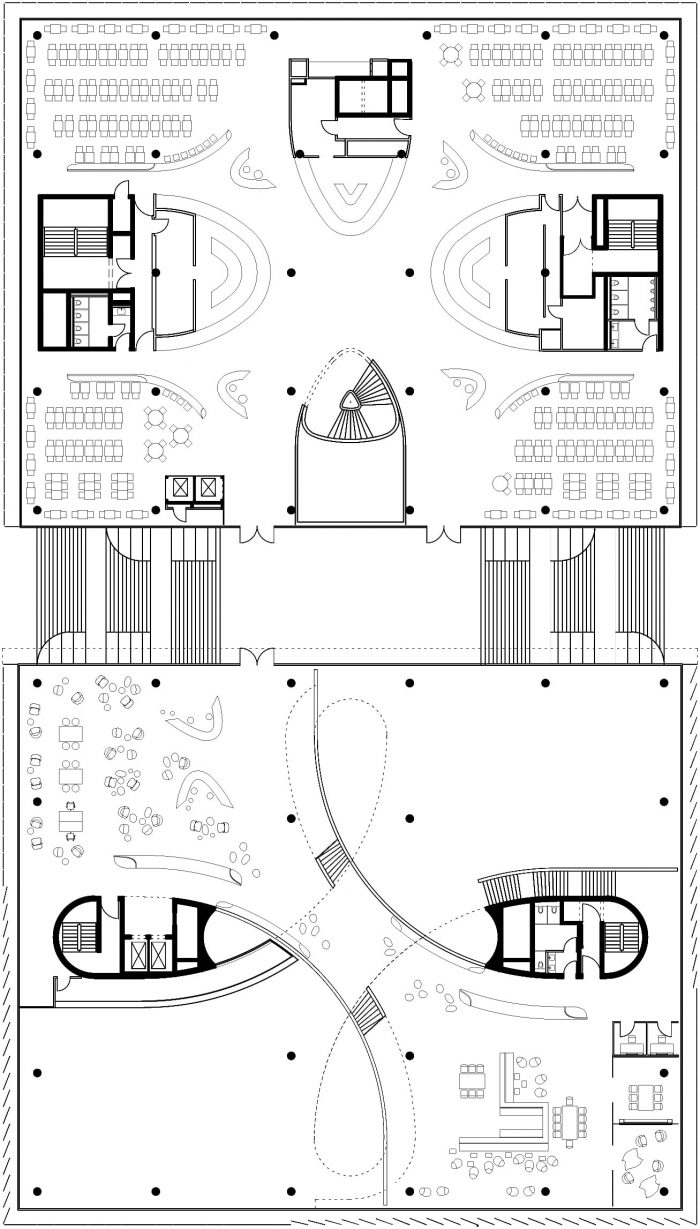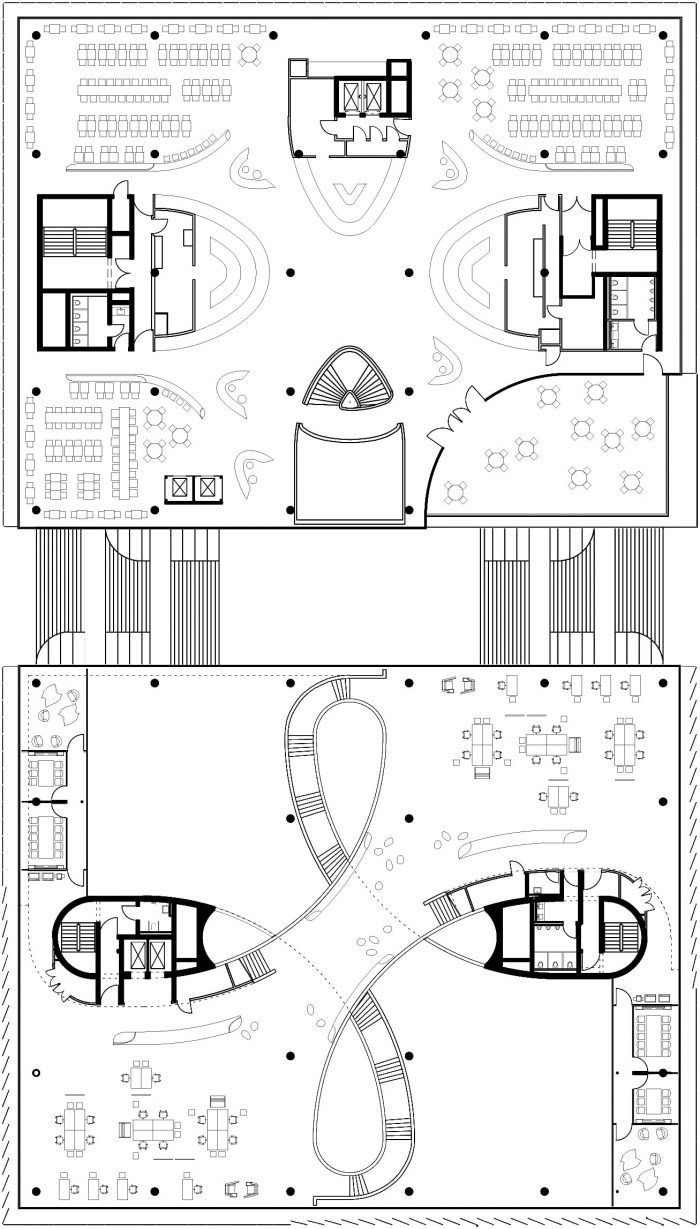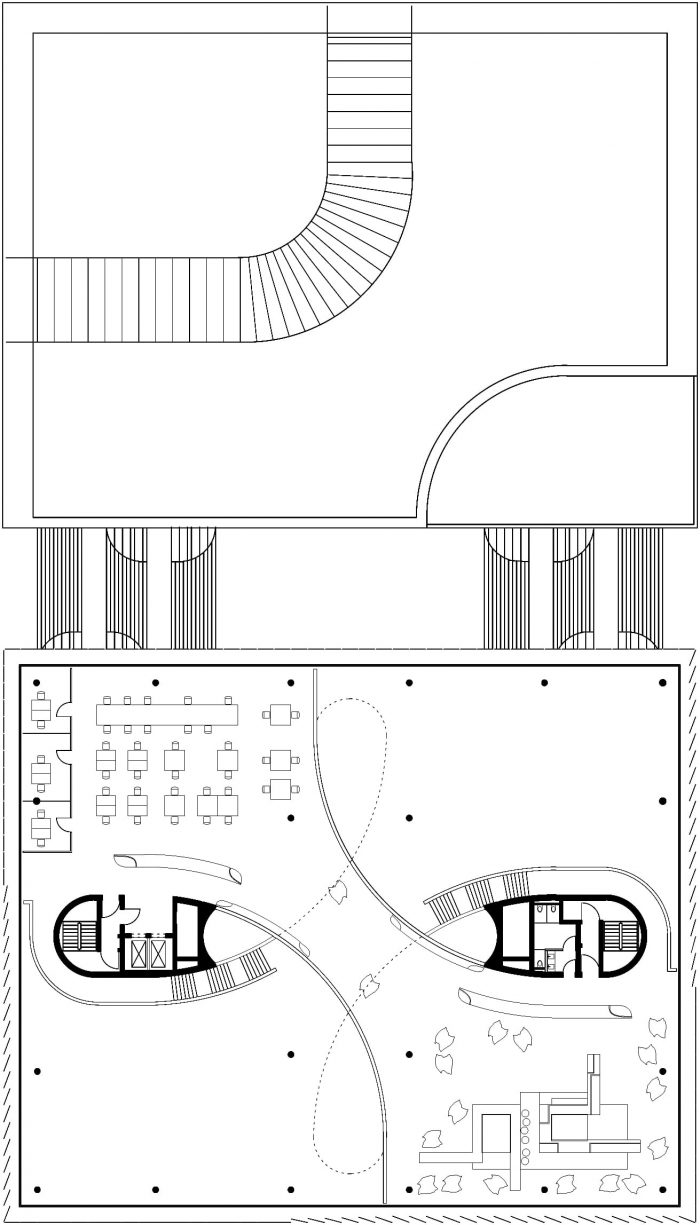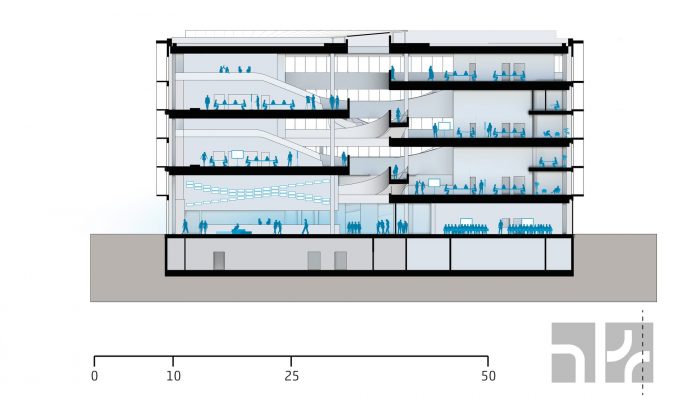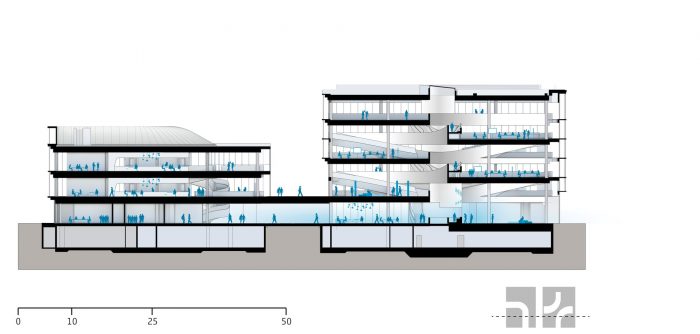位于德国达姆施塔特的科学和技术公司默克公司的所在地正逐步从一个生产车间改造成一个技术和科学园区。这一转变的核心是拥有一个新的工作世界的创新中心。
The site of the science and technology company Merck in Darmstadt (Germany) is progressively remodelled from a production works into a technology and science campus. The heart of this transformation is the Innovation Center with a new world of work.
该建筑背对Frankfurter Straße,从而产生了一个公共广场的空间–Emanuel Merck Platz。建筑体量的正交形状来自于邻近建筑的背景,同时与建筑内部的动画形成对比。内部的特点是连续流动的空间结构的展开。桥梁般的连接方式斜跨在椭圆形核心区之间的空间,将各个工作区相互连接起来。阶梯、坡道和地板区域螺旋式上升。一个工作小组和另一个工作小组之间的路线,从一个层面到另一个层面的路线,几乎是在不知不觉中毫不费力地完成的。一个动态的空间连续体将各个工作场所单一化,同时将它们连接起来,形成一个空间网络。
The building is set back facing Frankfurter Straße, thus generating the space for a public square – Emanuel Merck Platz. The orthogonal shape of the architectural volume is derived from the context of the neighbouring buildings, simultaneously acting as a contrast to the animation of the building’s inner workings. The interior is characterised by the unfolding of a continuously flowing spatial structure. Bridge-like connections diagonally span the space between the oval cores, linking the individual workspaces with each other. Steps, ramps and floor areas spiral upwards. The routes between one work group and another, from one level to the next, are accomplished almost imperceptibly and effortlessly. A dynamic spatial continuum singularises the individual workplaces whilst connecting them to form a spatial network.
交叉的桥梁使建筑的中心点更加密集,并将6米的空间高度减少到3米,看起来就像漂浮着。荷载的压力被沿外墙的支撑物和仅有的四根内部柱子所吸收。由于其高度抛光的不锈钢覆盖层,这些柱子实际上有一种非物质化的存在。
The inter-crossing bridges, which densify the centre point of the building and diminish the spatial height of 6 metres to 3 metres, appear to float. The strain of the loads is absorbed by supports along the facade and a mere four interior columns. Due to their highly polished stainless-steel coverings, the columns have a practically dematerialized presence.
每层都有两个工作区,相互对角定位。每个工作区都是为由外部和内部员工组成的项目组设计的,他们在临时或项目的基础上一起合作进行创新。集中室和会议室沿外墙和夹层布置。底层包括一个咖啡馆、一个休息室和一个礼堂;上层的第一层是图书馆和开放式工作站;顶层是一个车间。
Every level has two work areas, positioned diagonally vis-à-vis one another. Each workspace is designed to provide for a project group consisting of external and internal staff, cooperating together on innovations either on a temporary or a project basis. Concentration and meeting rooms are arranged along the facade and on the mezzanines. The ground floor contains a café, a lounge and an auditorium; the first upper storey a library and open workstations; the top floor accommodates a workshop.
通过使用跨度达20米的钢筋混凝土复合结构,工作区可以无柱布置。外墙设置在开放的外部板条后面,这些板条以不同的角度运行,反过来又给外部带来了一个动态的外观,并使内部空间的双层特征从外部清晰可见。全层高的透明外墙和高度吸音的天花板在日光和声学方面提供了理想的工作条件。此外,创新中心在照明、装修和天窗方面采用了一系列默克的新产品和技术。最新的OLED技术被应用于光云艺术装置,以及媒体墙显示器装置。
By using a reinforced concrete composite construction with spans of up to 20 metres, the work areas can be laid out column-free. The facades are set behind open external slats that run at varying angels, in turn giving the exterior a dynamic appearance and making the double-storey character of the interior spaces legible from the outside. The all-round storey-high transparent facades and the highly sound-absorbent ceilings provide ideal working conditions in terms of daylight and acoustics. In addition, the Innovation Center features a whole series of new Merck products and technologies in the lighting, the finishings and the skylight. The latest OLED technology was applied in the Light Cloud art installation, as well as the Media Wall monitor installation.
创新中心通过一个开放的楼梯与员工餐厅相连,餐厅采用了创新中心的弧形和流动的建筑语汇。员工餐厅由位于底层的美食广场和位于上面两层的餐厅设施组成。螺旋形的楼梯、椭圆形的柜台、建筑中心的浓缩空间以及角落里放大的开放空间都与创新中心相呼应。
这两座建筑都通过了LEED的白金标准认证。
The Innovation Center is connected to a staff restaurant via an open stairway, the restaurant adopting the curved and flowing architectural vocabulary of the Innovation Center. The staff canteen consists of a food court on the ground floor with the restaurant facilities on the two upper floors. Spiral staircases, oval counters, the condensed space in the centre of the building and the amplified, open space at the corners all echo the Innovation Center.
Both buildings are certified with the LEED’s platinum standard.
Architects: HENN
Year : 2018
Photographs :HG Esch, Hennef
Manufacturers : Sto, DURLUM, Feco, Lindner, Barit, Muller – BMM
City:DARMSTADT
Country:Germany

